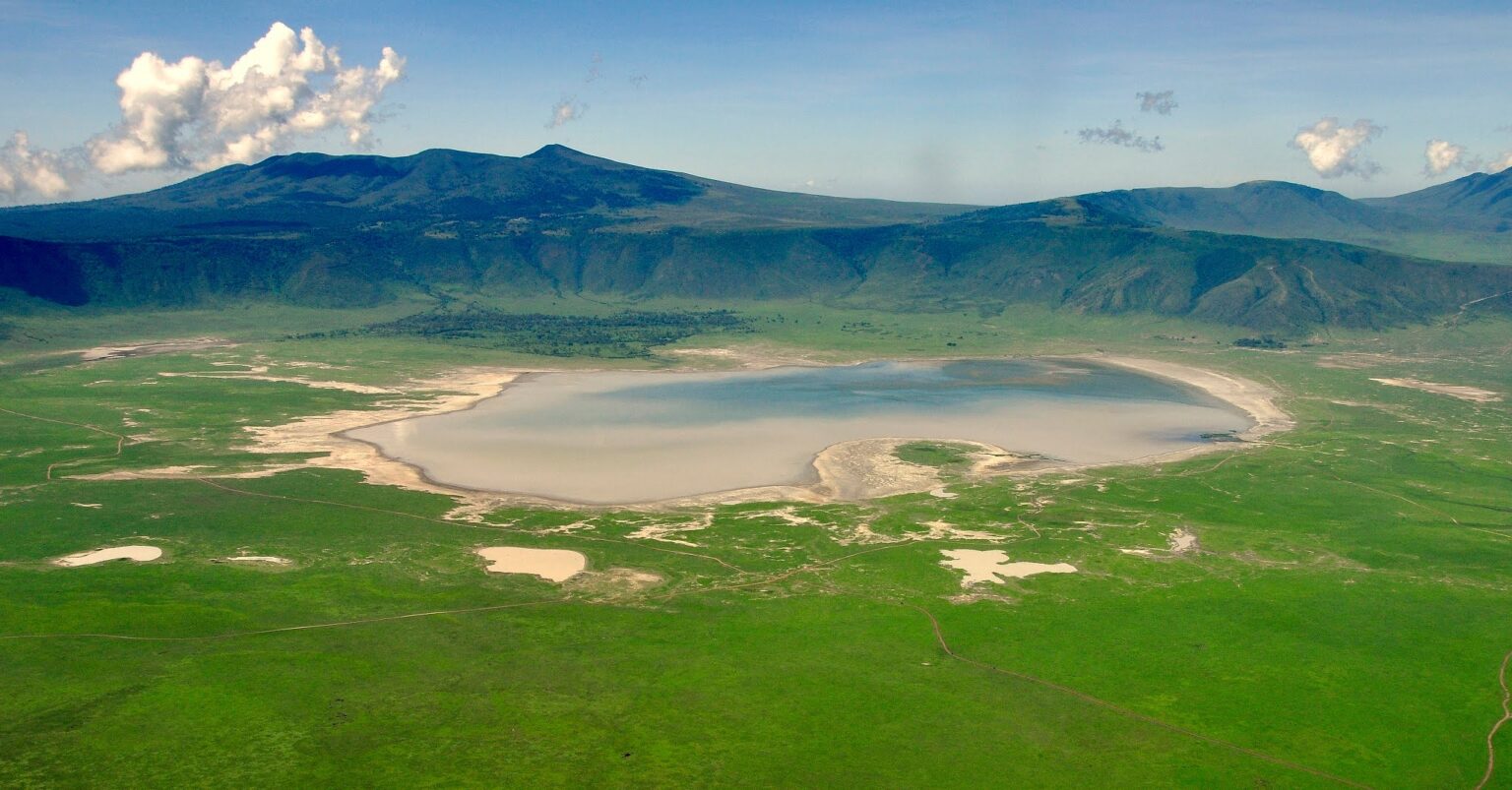- The number of tourists visiting Tanzania has significantly increased, especially visitors to the globally famous caldera, the Ngorongoro Crater.
- Over half a million tourists visited the East African country in the first half of the 2023/24 year.
- Authorities have managed to control poaching in the renowned UNESCO Heritage site, Ngorongoro Crater, a top tourist destination.
The number of tourists visiting Tanzania has significantly increased, especially visitors to the globally famous caldera, the Ngorongoro Crater.
This 2000-foot-deep caldera was formed when a giant volcano exploded and collapsed on itself some two to three million years ago. Over the years, the crater has become a tourism sensation, attracting thousands yearly.
From the famed lions that climb trees to the sheer size of the crater and the lakes inside it, the grazing herbivores on its slopes, wildebeests, zebras, elephants, buffaloes, name it, all the big five are to be found in and around the Ngorongoro Crater.
Ngorongoro Crater, a World Heritage Site, is a marvel to behold
Despite all these attractions and their historical significance as home to the first humans, earning them the title ‘Cradle of Mankind,’ now a World Heritage Center, COVID-19 made it impossible to visit the site.
With restrictions on travel, the tourism sector plummeted, but now it’s recovering fast. According to the Ngorongoro Conservation Area Authority (NCAA) figures, more than 10 per cent of the number of tourists visited the park during the 2022/23 fiscal year.
The NCAA has recorded 534,065 tourists in the first half of 2023/24 alone. Overall, from January to August 2023, international arrivals increased to 1,131,286 compared to 900,182 who entered the country during the corresponding period in 2022, an increase of 231,104 visitors, equivalent to 25.7 per cent.
The National Bureau of Statistics (NBS) reports that the total number of arrivals that entered the country was 336,203 visitors through Zanzibar, equivalent to 31.1 per cent.
The NBS reports that from January to August 2023, the majority of arrivals came from the US, with 84,541 visitors, followed by France (72,009), Germany (57,798), the United Kingdom (51,505), and Italy (51,056).
Meanwhile, for August 2023, the majority of arrivals came from Italy (14,986), the US (14,416), France (11,997), the United Kingdom (9,852), and Germany (9,161).
The tourist arrivals are not only from outside of Africa but also within the continent. The NBS reports that, during the period under review, the majority of arrivals from Africa as a source market came from Kenya with 128,753, followed by Burundi (69,505), Zambia (38,394), Rwanda (37,269), and Uganda (28,594).
Moreover, for August 2023, the majority of arrivals were mainly from the same source markets, with Kenya recording Kenya 18,550 visitors, followed by Burundi (12,310), Zambia (6,649), Rwanda (5,124), and Uganda (4,052).
Generally speaking, Tanzania’s tourism sector is fast growing and is among the country’s significant sources of foreign exchange.
“Therefore, service providers must offer quality services to attract more visitors, not only first-time arrivals but also maintaining repeat arrivals,” NBS writes.
According to the NCAA Conservation Commissioner, Richard Kiiza, “President Samia’s efforts to revive the tourism industry immediately following the Covid-19 pandemic, especially after launching the Royal Tour documentary.”
The Royal Tour is a documentary that Tanzania President Samia Suluhu Hassan starred in describing and showing off Tanzania’s prime tourism attractions.
Ngorongoro Conservation Area sees an uptick in visitors
The film is reported to have significantly helped to increase the number of tourists at Ngorongoro Conservation Area (NCAA), which reached 752,232 for the fiscal year 2022/23, up from 191,614 registered during the 2020/21 period.
Commissioner Kiiza also highlighted that for the fiscal year 2023/24, the anticipated number of tourists visiting the country is expected to clock one million.
The influx of tourists has increased government revenue; “Tourism receipts in Tanzania amounted to 1.5 billion U.S. dollars in the year ending April 2022. The value more than doubled compared to the same period in 2021, when the sector was strongly affected by the coronavirus (COVID-19) pandemic,” reports Statista.
Read also: IFC Commits $30 Million to shape the future of infrastructure in Africa
Trouble: Relocation of Masai in the Ngorongoro Area
Human Rights Watch reports that as early as 1951, communities within and around Ngorongoro faced numerous evictions and regulations that curtailed their rights to graze cattle and cultivate subsistence gardens.
“Currently, the government plans to displace about 150,000 pastoralists for its conservation initiatives in two areas in Ngorongoro district, Loliondo Game Controlled Area and Ngorongoro Conservation Area (NCA),” reports the organization.
In June 2022, the media reported clashes between security forces and Maasai in Loliondo during a land demarcation exercise. Since then, many critics have raised their voices over the alleged displacement of the Masai in the NCA and its vicinities.
Despite critics’ upraise and disapproval of the removal of Masai from the Ngorongoro Conservation Area (NSA), the government of Tanzania is describing the move as “voluntary relocation” from the protected area
The several thousands of ethnic Masai are to voluntarily relocate to the villages of Msomera, Saunyi-Kilindi, and Kitwai B-Simanjiro that have been set aside for them. Commissioner Kiiza insisted that NCA is a protected area and a UNESCO World Heritage Site; hence, the Masai relocation is meant to protect NCA.
Commissioner Kiiza discredited critics, saying the move was legitimate and of goodwill. He reassured all stakeholders that the government has the best interest of the relocated communities.
In line with the relocation, the authority seized the opportunity to highlight the status of poaching in the NSA.
He said, “The NCAA, working with specialized organs to combat poaching, has successfully contained instances of wildlife poaching both inside and beyond the Pololeti Reserve Forest in the Ngorongoro District of Arusha Region.”
“We have been able to control elephant poaching incidents from 25 incidents in 2020/21 to one in 2022/23,” he said.
According to the authority, the NCAA has successfully increased the population of black rhinoceroses by 25 per cent between 2021 and 2023.
The relocation of communities reduced poaching and increased live births of endangered species, which all speak well of the NCA ecosystem. As the NCA flourishes, so does the country’s tourism sector.




